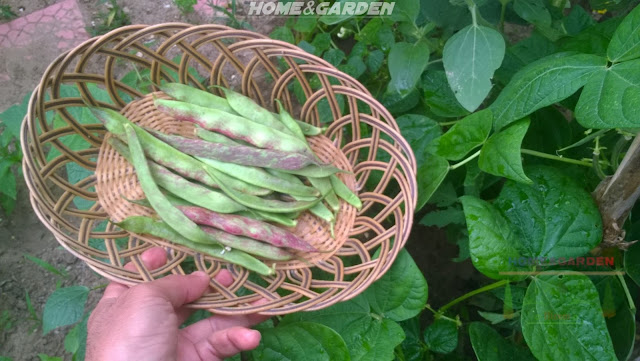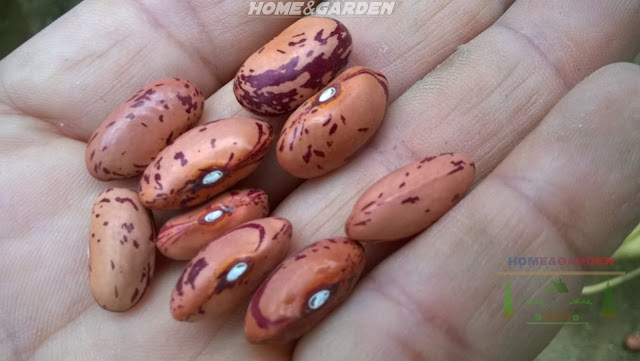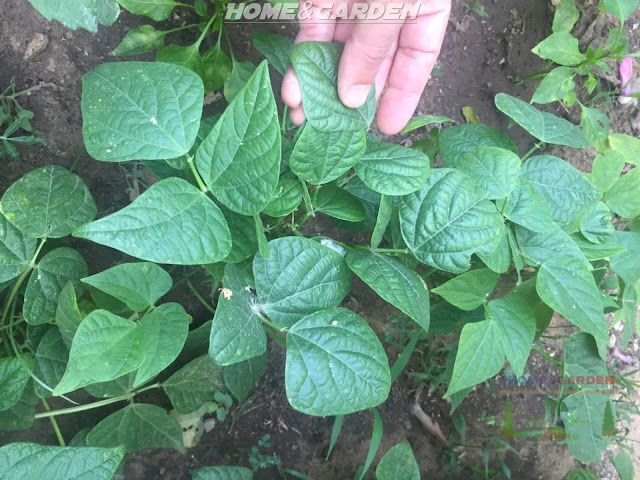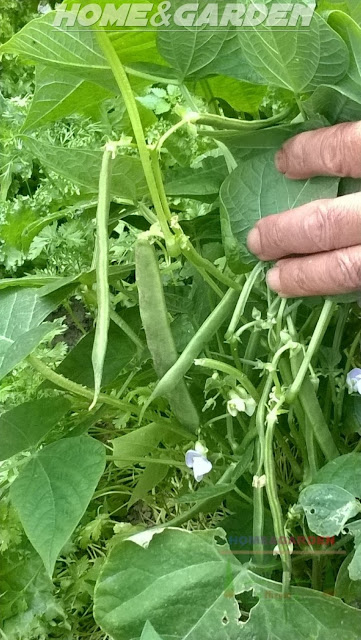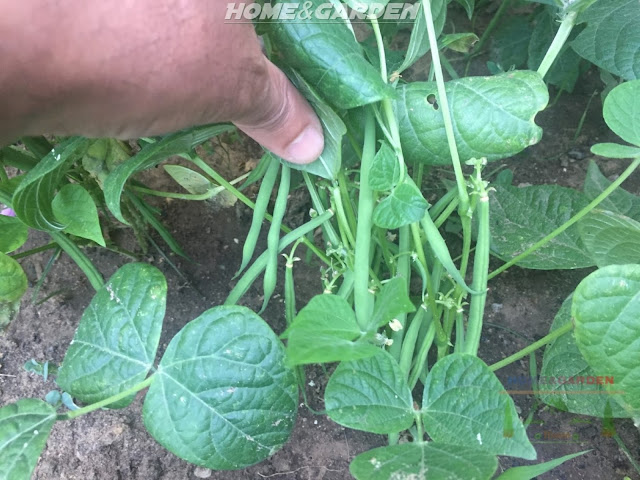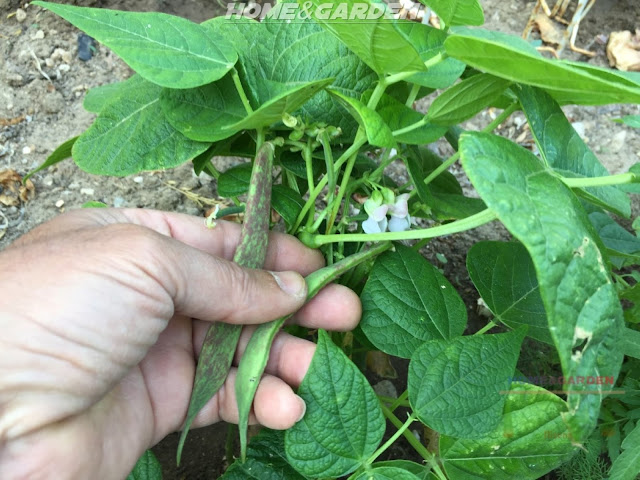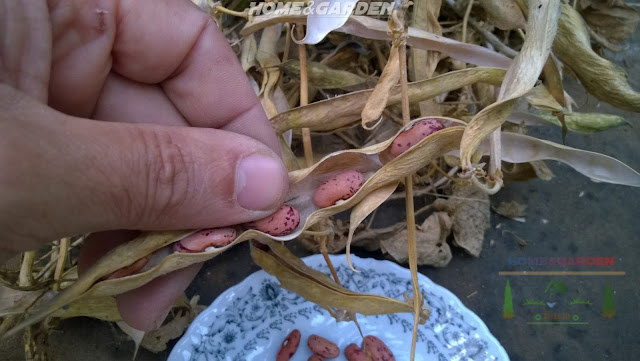Beans are some of the easiest veggies to grow, which makes them ideal for beginners and beloved by any veggie gardeners. Beans grow with little care, produce an abundance of pods and can add nitrogen to the soil, making them ideal plants for organic vegetable gardens.
Beans are often categorized by two sets of criteria: type of growth and stage at which they're usually picked and eaten. The plants can grow either as bush or pole type beans, and are also categorized as snap, shell and dry , depending on degree of development at time of harvest. All beans are easy to grow, and all need the same growing conditions .
There are too many specific bean types , the majority of bean plant varieties can be divided into a few main subgroups.
Pole beans
These beans are a good choice for small gardens because they use vertical space so they need a structure to climb up, like a trellis or a fence. Some varieties can get quite long. Pole bean flavor is far better than even the best bush beans, they're sweeter and starchier.
Bush beans

These beans are shorter and freestanding. Because they can be planted virtually anywhere, bush beans are easier to grow. Another thing that divides the varieties of bean plants is the difference between snap beans and shell beans. Basically, snap beans can be eaten raw, pod and all, while shell beans are meant to be opened up, or shelled, so the seeds inside can be eaten and the pods thrown away.
Dry soup beans: (Phaseolus vulgaris) grow like snap beans, but the immature pods stay tender for only a few days as the plants hurry to produce mature seeds. They are very easy to dry. Growth period: 55 days green, 85 days dry
Scarlet runner beans: (Phaseolus coccineus) produce showy clusters of red blossoms that attract hummingbirds and bumblebees. You can eat the young pods like snap beans, or let the pods dry and harvest the mature beans. Growth period: 60 days green, 90 days dry.
Lima beans: (Phaseolus lunatus) stand up to humid heat and heavy insect pressure, which makes them a fine bean for warm climates. Growth period: 75 days bush, 85 days pole.
Yard-long beans, or asparagus beans: (Vigna sesquipedalis), are grown for their long, slender pods, which are harvested at 12 to 18 inches long. Pods may be green, burgundy, or streaked. Growth period: 80 days.
Tepary beans: (Phaseolus acutifolius), a type of dry bean, were developed by the native people of the Southwest, so they’re well-adapted to desert conditions. They come in various colors. Growth period: 80 to 90 days.
. Where to Grow Beans .
Beans prefer a sunny, well-drained spot. They prefer to grow in moist, fertile soil in a sheltered spot away from strong winds.
Prepare the site in autumn by digging it over and adding some well rotted organic matter.
Beans prefer warm weather and shouldn’t be grown in cooler climates. These crops should be grown in sites receiving full sun in well-drained, fertilized soil. Preparing the soil with compost and manure before planting is highly recommended. Beans should not be planted until all danger of frost has passed, usually about a week after the last frost in spring.
. How to Grow Beans .
You can grow lots of beans in a limited space, and there is a huge variety of beans to choose from.
From HERE You Can choose from multiple good bean varieties to grow in your garden!
Dig individual planting holes with a trowel and drop in two to three seeds per hole, so they fall about an inch (2cm) apart, and are two inches (5cm) deep. Water the soil immediately after planting and then regularly, until they sprout. Make the first sowing one week before your last expected frost date, then continue sowing every three weeks until midsummer.
Bean seeds will germinate in five to ten days. Once they have pushed up, spread mulch lightly over the surface of the soil to help conserve moisture.
Water your bean plants once a week, and make sure that the soil is moist not wet to ensure good growing condition for maximum production.
Pole beans grow tall and must be trellised.Not only are they beautiful to look at, but they also make the most of vertical space.
Bush beans are compact and don’t need supports. Since they don’t cast long shadows, they can more easily be planted in and around other plants.
. Maintaining Beans .
Once established, beans don’t need supplemental fertilizer as they fix their own nitrogen, but you should still amend the soil with organic matter. However, if the leaves of young plants are pale this is an indication of nitrogen deficiency and starts can be fertilized with with natural nitrogen rich fertilizer. Keep your beans well watered in dry weather, especially once they begin to flower. Mulch around the base of the plants to keep the ground moist for longer.
Bush beans begin producing before pole beans and often come in all at once. Staggered planting, every 2 weeks, will keep your bush beans going longer. Pole beans need time to grow their vines, before they start setting beans. The pole bean crop will continue to produce for a month or two.
Pole beans may need some initial help in climbing. Keep the bean plants well watered. Mulch helps keep their shallow roots moist. Long producing pole beans will benefit from a feeding or a side dressing of compost or manure about half way through their growing season. Don't plant the seeds in cold wet soil to prevent seed rot.
. Harvesting Beans .
Harvesting beans is an ongoing task and the more beans you pick, the more beans the plants will set so pick beans regularly to keep the plant producing .
You can start to harvest anytime after the beans form. Harvest by gently pulling each bean from the vine or by snapping them off at the vine end. For the best flavor and nutritional value pick your beans when they're young and tender.
 When you pick the pods, you encourage more blossoms and more pods. That's because the plant is trying to produce large, mature seeds to complete its life cycle. When it succeeds in producing seeds, the plant will stop blossoming and making pods, so keep picking your beans when they're young for a continuous harvest!
When you pick the pods, you encourage more blossoms and more pods. That's because the plant is trying to produce large, mature seeds to complete its life cycle. When it succeeds in producing seeds, the plant will stop blossoming and making pods, so keep picking your beans when they're young for a continuous harvest!
You can start to harvest anytime after the beans form. Harvest by gently pulling each bean from the vine or by snapping them off at the vine end. For the best flavor and nutritional value pick your beans when they're young and tender.
 When you pick the pods, you encourage more blossoms and more pods. That's because the plant is trying to produce large, mature seeds to complete its life cycle. When it succeeds in producing seeds, the plant will stop blossoming and making pods, so keep picking your beans when they're young for a continuous harvest!
When you pick the pods, you encourage more blossoms and more pods. That's because the plant is trying to produce large, mature seeds to complete its life cycle. When it succeeds in producing seeds, the plant will stop blossoming and making pods, so keep picking your beans when they're young for a continuous harvest!At the end of the season it’s worth leaving a few pods to dry out on the plant. Shell the dried pods then bring the beans inside to dry further in an airy location. Store the beans in paper envelopes, labeled with the variety and date, then use them for next growing season.
Whether you are planting your first vegetable garden or have years of experience, growing beans should be at the top of your garden project. Dependable and easy to care for, beans are among the most productive veggies you can grow. So grow it and enjoy harvesting organic fresh beans from your garden!
Bean Seeds Available From HERE!
If you have any tips for growing beans, we'd love to hear them - please share them in the comments below.
. DISCLOSURE .
Some of the links to products on this site are affiliate links. I do make a small commission (at no extra cost to you) from these sales. Homeandgarden is a participant in the Amazon Services LLC Associates Program, an affiliate advertising program designed to provide a means for sites to earn advertising fees by advertising and linking to amazon.
Happy Gardening!



